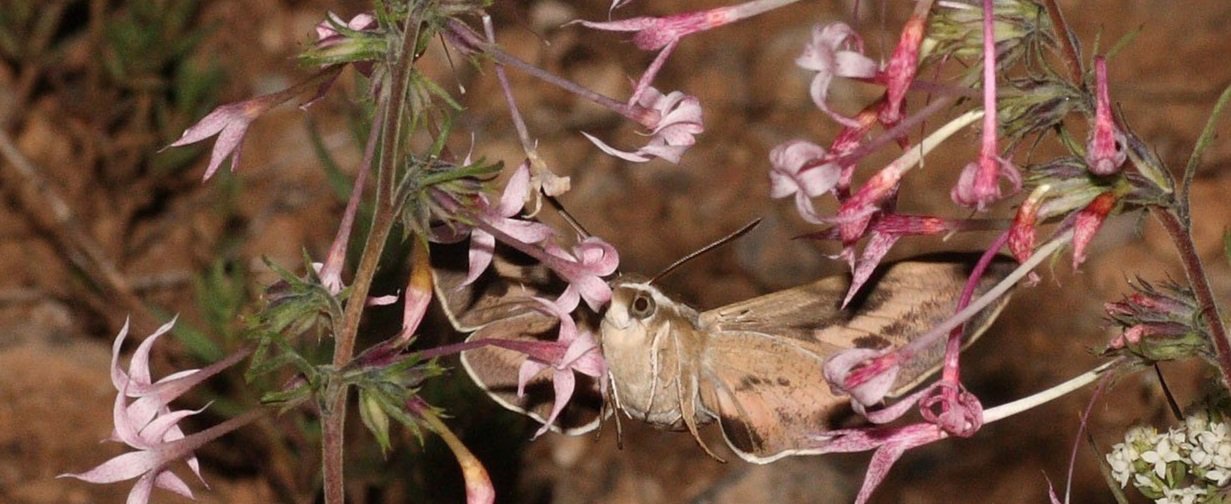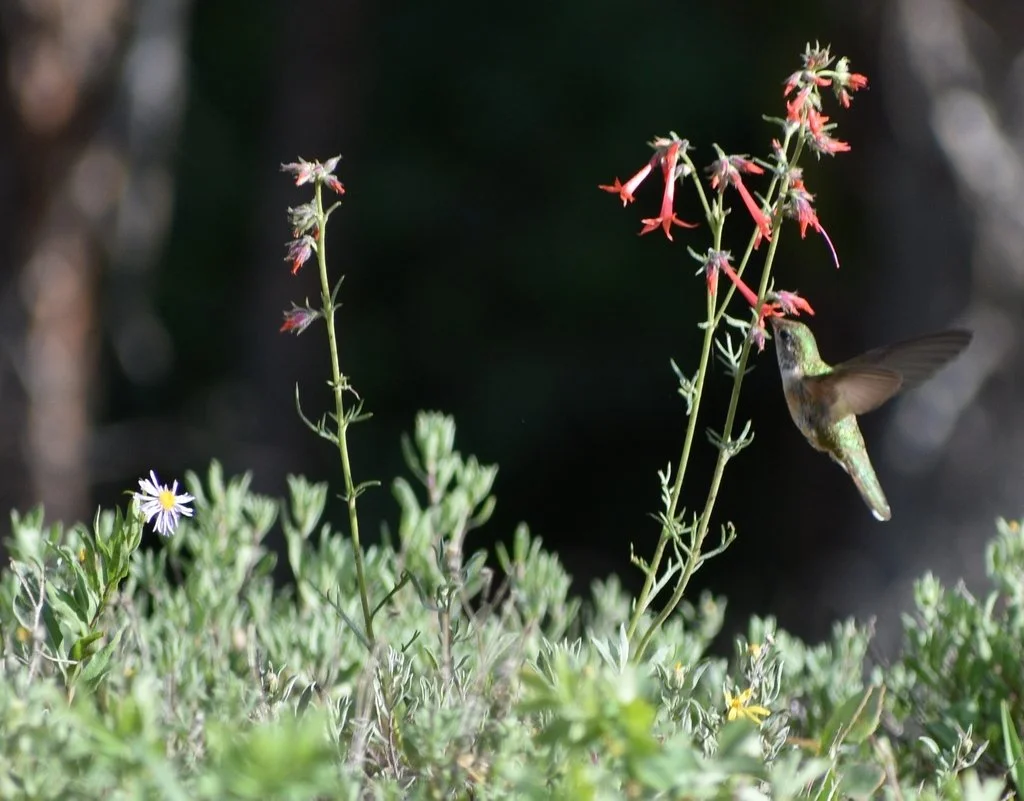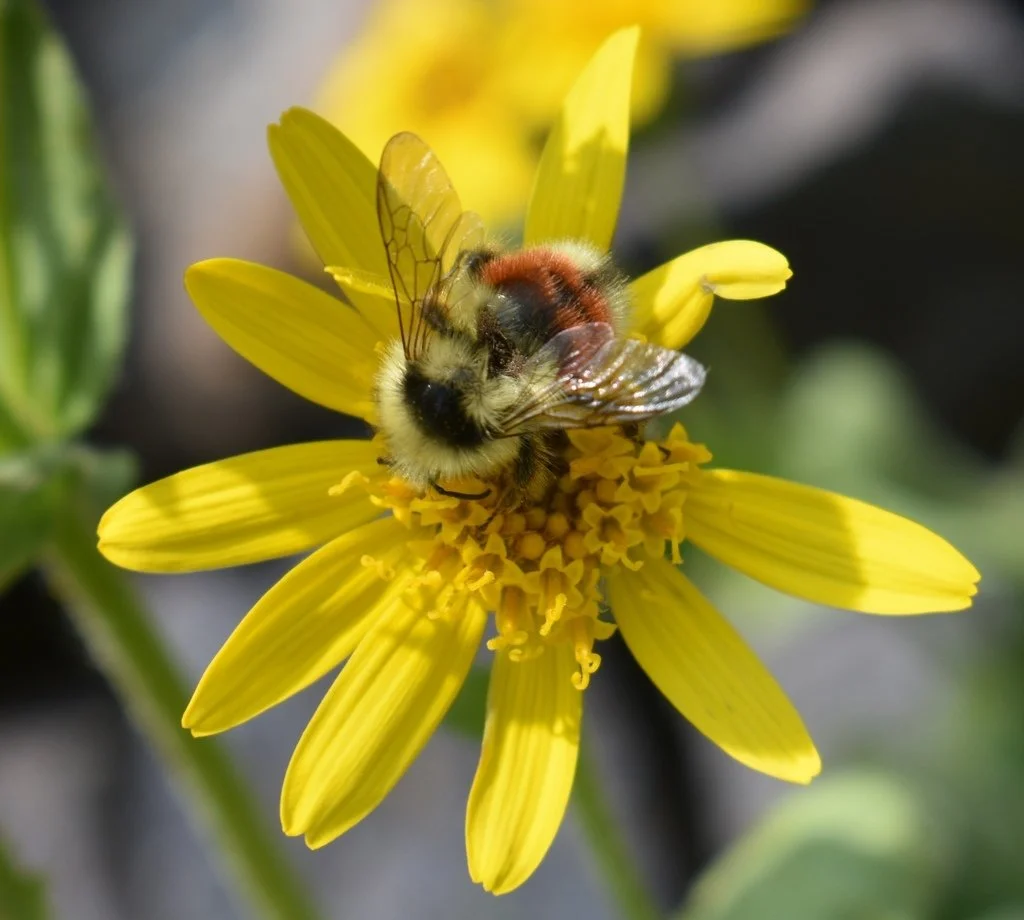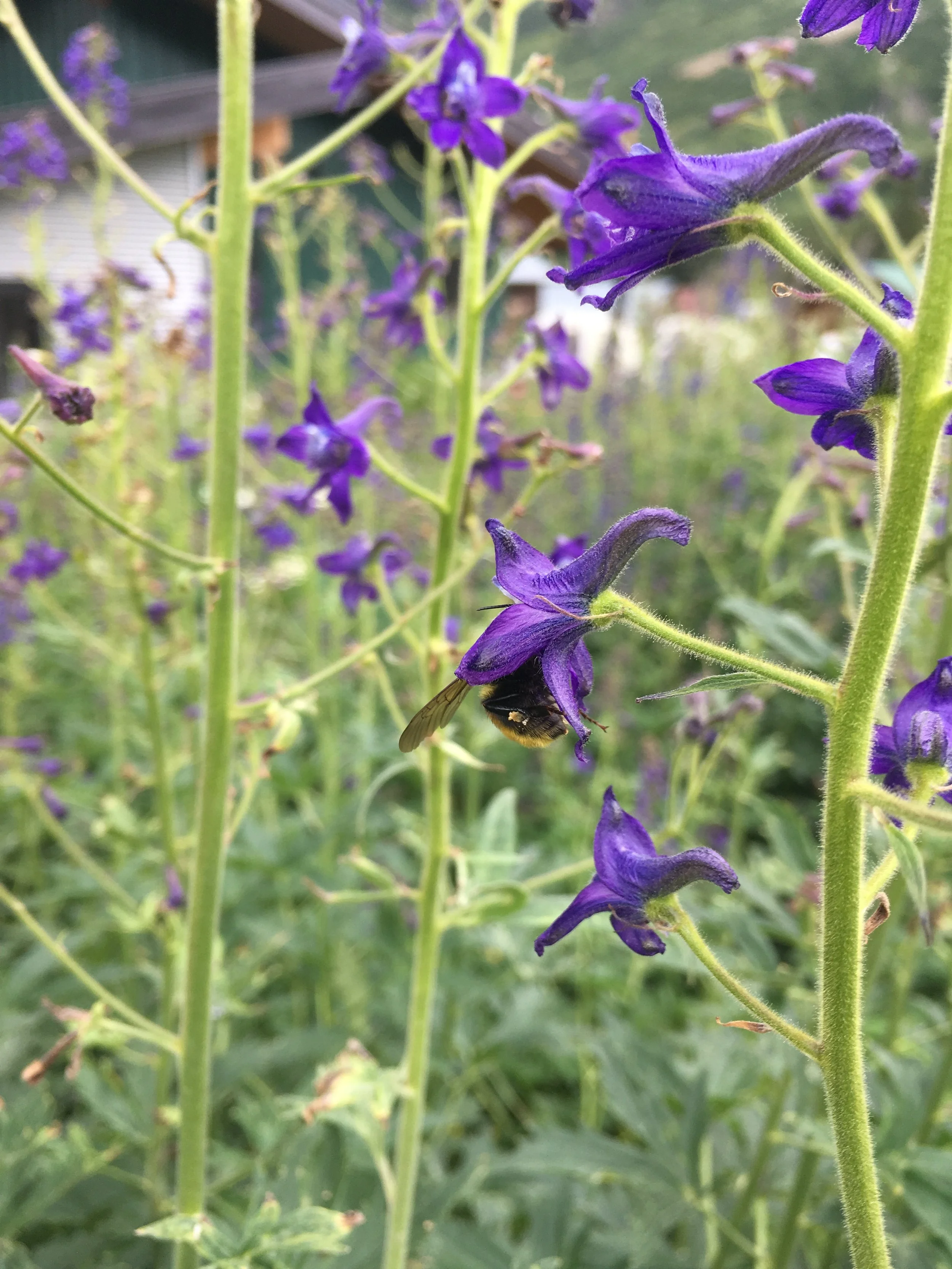Pollinator Floral Preferences
There is a wide diversity of animal and insect pollinators that are attracted to flowers in many different ways. Plants rely on pollinators for reproduction, while pollinators rely on plants for rewards. Some of the main ways that flowers attract pollinator visitors are through their shapes, scents, colors, patch sizes, floral displays, and the type of rewards (pollen vs. nectar) that they offer. Often, a flower uses a combination of these factors to attract pollinators. This blog focuses on three broad groupings of pollinators and a few examples of how they are generally attracted to their floral partners (Please note that these are general examples, and there are always exceptions!)
Hawk Moths:
Hawk moths (or Sphinx moths) are typically attracted to large sweet-smelling flowers that store their nectar in long tubes. These moths usually take to the gardens at night to pollinate plants that open up when it is cooler. Flowers that bloom at night typically rely more heavily on their scents to attract visitors than day blooming flowers. Most flowers that bloom during the night are white or other light colors, likely because they are more visible to pollinator visitors at night. Did you know that Hawk moths have the longest proboscises (tongues) compared to other moth or butterfly species? A hawk moth pollinates by hovering and inserting its long proboscis into flowers with deep nectar spurs. Silene is an example of a flower species that attracts Hawk moths in the Missoula area.
John Powers, personal photo, July 22, 2022.
Hummingbirds:
Hummingbirds seem to LOVE the color red. That’s why we see hummingbird feeder liquid sold solely in that color (experts now recommend providing fresh plain white sugar and water because it is much healthier for these little birds. It will need to be changed often). Hummingbirds have a more specialized and concentrated cone within their retinas, making them more attracted to bright primary colors such as red and yellow. There is also another working hypothesis that hummingbirds often get more “bang-for-their-buck” from red and yellow flowers regarding the flowers’ nectar have a higher sugar concentration. Hummingbirds are not attracted to flowers by scent, so flowers that hummingbirds primarily pollinate often do not have strong smells. Because Hummingbirds have such long bills, they often specialize in pollinating flowers that contain nectar deep in their calyx or spur. An example of a native flower species that attracts Hummingbirds in the Missoula area is the Scarlet Gilia, Ipomopsis.
2. John Powers, personal photo, July 22, 2022
Bumblebees:
Bumblebees’ flower preferences are generally more diverse than those of hummingbirds and hawk moths. Bumble bees are typically attracted to flowers that are brightly colored, give off a pleasant smell, and have a solid landing pad. The foundation of a bumblebee’s color palette is blue (much like a human’s color palette is based upon red, blue, and yellow), so they can see greens, violets, and their special mix of UV light and yellow. Since bumblebees do not see primary red, they very rarely visit red flowers. Bumblebees have a unique way of pollinating some species of plants that require “buzz pollination,” such as tomato flowers. Buzz pollination is when bumblebees “…contract their flight muscles, which produces strong vibrations that they direct on to the anther using their legs and mouth….” (Bumblebee Conservation, n.d.) These plant species produce only a limited amount of pollen and store it up tightly, so Bumblebees are the only pollinators that can help them pollinate. The Larkspur, Delphinium, is an example of a native flower that is buzz pollinated by bumblebees in the Missoula area.
3. John Powers, personal photo, July 22, 2022.
4. Rye Dickson, personal photo, July 22, 2022.
Bumblebee Conservation Trust. n.d. “What Makes Bumblebees Such Good Pollinators?” Accessed July 20, 2022. https://www.bumblebeeconservation.org/bee-faqs/buzz-pollination/
Sakai, Ann and Stephen Weller. n.d. “Pollination Syndromes.” PowerPoint presentation, University of California, Irvine, CA.
US Forest Service. n.d. “Hawk Moths or Sphinx Moths (Sphingidae).” Accessed July 20, 2022. https://www.fs.fed.us/wildflowers/pollinators/pollinator-of-the-month/hawk_moths.shtml
US Forest Service. n.d. “Attracting Pollinators to Your Garden Using Native Plants.” Accessed July 20, 2022. https://www.fs.fed.us/wildflowers/pollinators/documents/AttractingPollinatorsV5.pdf




